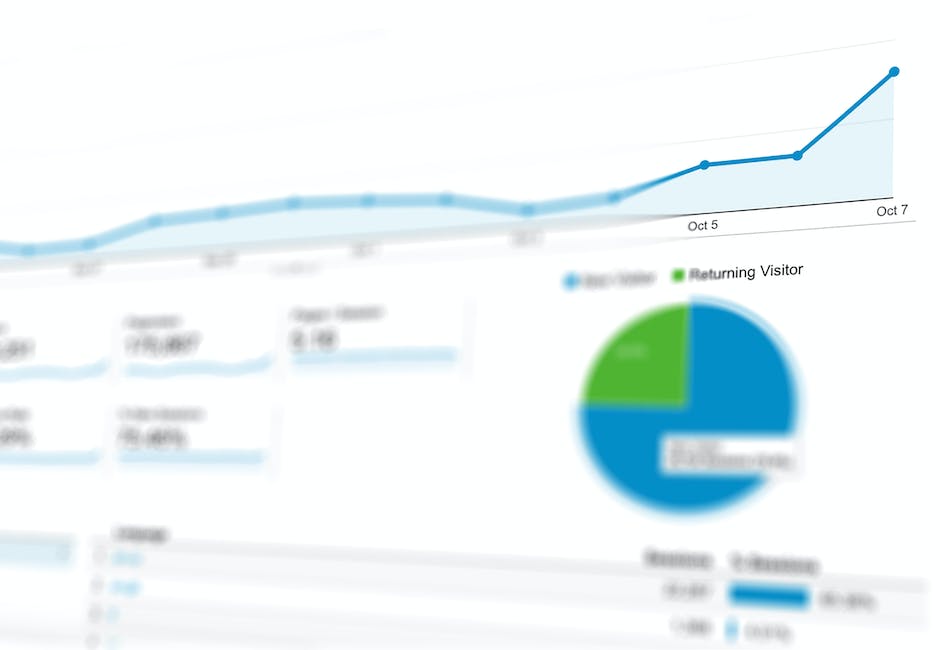Analytics have become a cornerstone in the tech industry, playing a crucial role in shaping business decisions and strategies. Particularly, two types of analytics often come up in discussions – predictive and prescriptive. But what exactly do these terms mean, and how do they differ from one another? Let’s simplify this: imagine you’re on a journey. Predictive analytics is like your GPS predicting the traffic and suggesting the fastest route, while prescriptive analytics is like a smart GPS that not only predicts but also suggests alternative routes if there’s a traffic jam or road closure. In this blog post, we will take a closer look at these two critical forms of analytics and discuss their applications in different sectors.

Understanding Predictive Analytics
Let’s start with predictive analytics. In simple terms, predictive analytics utilizes historical data, statistical algorithms, and machine learning techniques to predict future outcomes. It’s like the meteorologist who predicts the weather based on past climates and current conditions. In the tech industry, predictive analytics plays a crucial role in forecasting trends, behaviors, and events that can help businesses plan for the future.
Understanding Prescriptive Analytics
On the other hand, prescriptive analytics not only predicts but also suggests various course of actions and shows the potential impact of each decision. It’s like a chess game where the computer not only predicts the opponent’s moves but also suggests your best move along with backup strategies. Prescriptive analytics helps businesses make better decisions by providing them with actionable insights and recommendations.
Real-World Applications of Predictive and Prescriptive Analytics
Now that we have a basic understanding of predictive and prescriptive analytics, let’s discuss their real-world applications. Predictive analytics can be seen in action across various sectors, from predicting stock market trends in finance to forecasting patient health risks in healthcare. Similarly, prescriptive analytics is used in optimizing logistics in supply chain management, recommending products in retail, and improving resources allocation in manufacturing. Both types of analytics, when used effectively, can provide businesses with a competitive edge.
Dive Deeper into Predictive Analytics
Let’s take a closer look at predictive analytics. This powerful tool in the tech industry uses a variety of statistical techniques, from data mining and predictive modeling to machine learning, to analyze current and historical facts and make predictions about the future or unknown events. It’s like having a crystal ball, but one that’s powered by data, not magic.
Benefits of Predictive Analytics
Predictive analytics comes with a host of benefits. For starters, it enables organizations to detect risks and opportunities ahead of time. Imagine being able to predict customer behavior, market trends, or potential system failures before they happen. That’s the power of predictive analytics.
Furthermore, predictive analytics can optimize marketing campaigns and customer responses by predicting customer behavior. This can lead to more effective, targeted marketing strategies. It’s all about being proactive, not reactive.
Limitations of Predictive Analytics
However, like any tool, predictive analytics has its limitations. One of the key challenges is the quality and relevance of data. For predictive analytics to be effective, it requires high-quality, relevant data. If the data is inaccurate, incomplete, or biased, it can lead to incorrect predictions.
Dive Deeper into Prescriptive Analytics
Now, let’s turn our attention to prescriptive analytics. While predictive analytics forecasts what might happen, prescriptive analytics goes a step further and suggests various course of actions to take based on the predictions. It’s like having a trusted advisor who not only predicts the future but also offers advice on what to do about it.
Benefits of Prescriptive Analytics
Prescriptive analytics offers significant advantages. By suggesting the best course of action, it can help businesses make better, more informed decisions. It can optimize scheduling, production, inventory and supply chain design to maximize revenue, profits, and customer satisfaction.
Moreover, prescriptive analytics can also manage risk in a more effective way. It allows businesses to assess the potential impact of different decision options and choose the one that achieves the best outcome.
Limitations of Prescriptive Analytics
However, prescriptive analytics is not without its challenges. It requires complex algorithms and computational power. Implementing and maintaining prescriptive analytics systems can be costly and time-consuming. Furthermore, like predictive analytics, the effectiveness of prescriptive analytics is heavily dependent on the quality and relevance of data.
Key Differences between Predictive and Prescriptive Analytics
While both predictive and prescriptive analytics play crucial roles in data-driven decision making, there are some key differences that set them apart. Understanding these differences is important to ensure that you are using the right tool for the right job.
Primarily, predictive analytics focuses on forecasting potential future outcomes based on historical data. It answers the question, “What could happen in the future?” On the other hand, prescriptive analytics goes a step further. It not only predicts but also suggests a range of prescribed actions and the potential outcome of each. In other words, it answers the question, “What should we do?”
Another key difference lies in the complexity and processing power required. Prescriptive analytics typically requires a more complex model and higher computational power than predictive analytics due to its use of sophisticated algorithms and simulation techniques.
| Predictive Analytics | Prescriptive Analytics | |
|---|---|---|
| Focus | Forecasts potential future outcomes | Suggests a range of prescribed actions and their outcomes |
| Question Answered | “What could happen in the future?” | “What should we do?” |
| Complexity | Less complex model | More complex model, requires higher computational power |
Choosing Between Predictive and Prescriptive Analytics
So how do you decide whether to use predictive or prescriptive analytics? The answer largely depends on your business needs and the nature of the decisions you are trying to make.
If your goal is to understand potential future outcomes based on historical data, then predictive analytics is your go-to tool. However, if you are looking to make more informed decisions by understanding the impact of different actions, then prescriptive analytics would be more suitable.
It’s also important to consider the resources available. As mentioned earlier, prescriptive analytics requires more computational power and sophistication, which might not be feasible for all businesses.
Integrating Predictive and Prescriptive Analytics
While predictive and prescriptive analytics have their unique uses, integrating both can bring about even greater benefits. Predictive analytics can provide valuable insights into potential future outcomes, but without prescriptive analytics, you may not know how to act on these insights.
By combining the predictive power of forecasting with the prescriptive power of actionable insights, businesses can optimize their decision-making process. This integrated approach allows businesses to not only predict what might happen but also understand what they should do about it, thereby maximizing their chances of success.

Skills Needed for Predictive and Prescriptive Analytics
Mastering the art of predictive and prescriptive analytics requires a unique blend of skills ranging from technical know-how to strategic thinking. But what exactly are the skills that will make you excel in these fields? Let’s break it down.
Here are some specific skills that are particularly useful in predictive analytics:
- Statistical analysis
- Data mining
- Machine learning
- Algorithm development
- Business intelligence
On the other hand, for prescriptive analytics, these skills come in handy:
- Optimization techniques
- Simulation algorithms
- Decision theory
- Business strategy
- Change management
Future Trends in Predictive and Prescriptive Analytics
As technology continues to evolve, so does the field of predictive and prescriptive analytics. But what trends should we anticipate? Well, here are some predictions.
Firstly, we might see a rise in the use of AI and machine learning in both predictive and prescriptive analytics. This could potentially allow for more accurate predictions and better decision-making. Secondly, there might be an increase in the integration of these analytics into business operations, making them a key part of strategic planning. Lastly, we could expect the development of more user-friendly analytics tools, making these complex analyses accessible to a wider audience.
These trends highlight the evolving nature of predictive and prescriptive analytics, emphasizing the importance of continuous learning and adaptation in these fields. So, are you ready for what’s coming?
Final Takeaways
Whether you’re a seasoned data analyst or a business professional interested in leveraging data for strategic decisions, understanding predictive and prescriptive analytics is crucial. But remember, it’s not just about the technical know-how. The real value lies in the application of these analytics to real-world scenarios and decision-making processes.
So, what’s your takeaway from this? Perhaps it’s the need to brush up on some technical skills or the realization that your business could benefit from these analytics. Whatever it is, don’t stop here. Keep exploring, keep learning, and embrace the power of predictive and prescriptive analytics!
